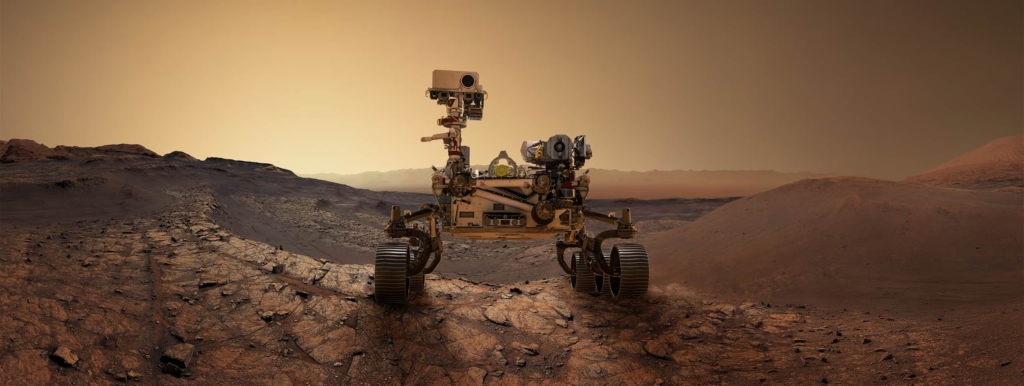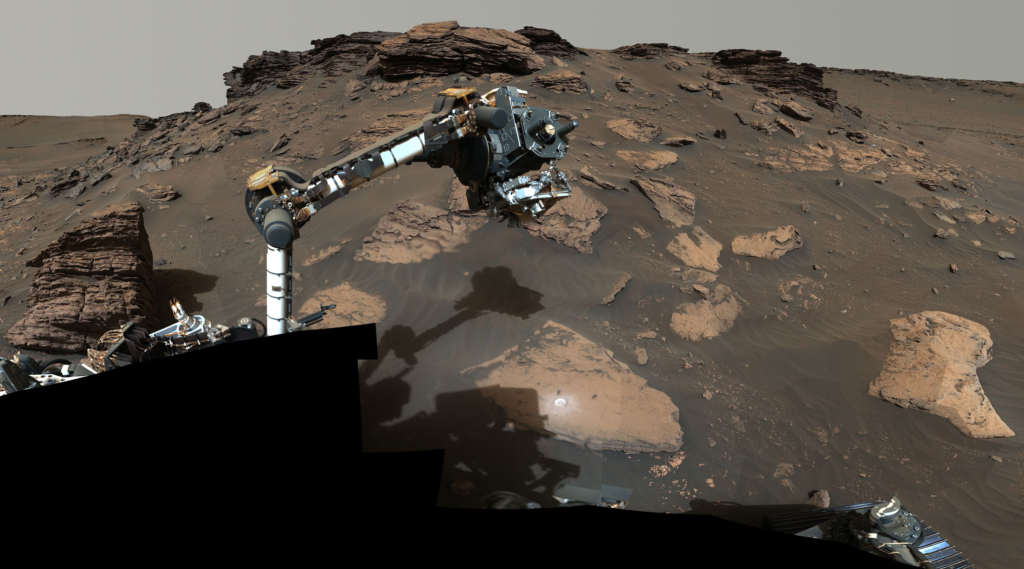
NASA’s Perseverance Rover Has Been Very Busy
The Perseverance Rover has been in the Jeziro Crater for more than a Martian year, or 687 Earth days. In that time and especially recently, a lot has happened in preparation for different experiments and missions. This includes a journey out of the base of the crater and up Jezero’s western fan as it begins exploring the upper surface.
As of right now, it has sealed 22 of the 43 sample tubes it brought to Mars and created the Three Forks Sample Depot where it deposited 10 of these samples. Earlier this year Perseverance completed one of its biggest milestones with the construction of the first sample depot on another world. This event involved precision planning and navigation to ensure the tubes could be safely recovered in the future by the Mars Sample Return campaign.
After exploring boulder field last week, Perseverance is continuing the Upper Fan campaign with important mission objectives coming up as well. Here I will go more in-depth into what the rover has been up to, the current Mars Sample Return progress, its busy route, and more.
The Rover’s Route

Different images and videos show off the unique route that Perseverance has traveled since landing back in 2021. After the rover touched down, it planned and executed its journey to the Jezero Crater delta. In September of last year, NASA began to plan future travel options for the rover. This annotated image highlights potential routes that NASA’s Perseverance team was considering last year for the rover to drive from the front of an ancient river delta to the rim of Jezero Crater. The Perseverance team and the U.S. Geological Survey collaborated on the base map seen here, combining multiple images from the High Resolution Imaging Experiment (HiRISE) camera with color from the Compact Reconnaissance Imaging Spectrometer for Mars (CRISM), both instruments aboard NASA’s Mars Reconnaissance Orbiter (MRO). The HiRISE images used span a period from 2007 to 2017.
Perseverance landed on the floor of Jezero Crater on Feb. 18, 2021. The delta, which Perseverance reached in April 2022, is a fan-shaped area where an ancient river once flowed into an ancient lake and deposited rocks and sediment. Looking at the most updated and current map of the Rover, it’s clear they decided to go the innermost route.
With this important work out of the way, the rover’s science team eagerly turned its attention to the prospect of new discoveries in the unexplored area on the Delta Top. To reach these areas as quickly as possible, the scientists planned an aggressive driving campaign up the river delta. The first stop in this race up the delta would be the Tenby region – home to some of the most geologically interesting outcrops of the delta.
This fresh terrain represented a golden opportunity for Ingenuity to prove its worth to the rover’s science mission. In this case, the rover and helicopter have been sling-shotting each other to provide recon for the rover. Specifically, providing the rover team with overhead images just a few days before the rover reaches a site gives scientists significantly more time to determine their exploration priorities, and gives rover planners advanced notice of any unexpected terrain. With the fading of Martian winter, Ingenuity now had enough power to fly hundreds of meters ahead of the rover with each flight and deliver on the promise of being a real science scout.
This game of cat and mouse repeated itself several more times over the next few flights, with the helicopter operations team eventually setting a new record for flight frequency. Taken together, these efforts allowed the helicopter to stay ahead of the rover all the way up the delta, arriving at Abercastell (within sight of Tenby) while holding a respectable two-sol lead on Perseverance. A number of issues (communications failures, anomalies with the rover, and a recurrence of a known helicopter camera issue) have since conspired to prevent them from getting advanced reconnaissance of Tenby, but they’re looking forward to scouting other nearby science targets while the rover is occupied.
Mars Sample Return Progress

In addition to exploring new areas and working together with Ingenuity to ensure a safe route, Perseverance has been digging a lot. NASA and the European Space Agency (ESA) are planning ways to bring the first samples of Mars material back to Earth for detailed study. The Mars Perseverance rover is the first leg of this international interplanetary relay team. Its job is to collect and cache samples on Mars. A Sample Return Lander would land near or in Jezero Crater, bringing a small rocket on which the samples collected by Perseverance would be loaded. Two Ingenuity-like helicopters would provide a secondary capability to retrieve samples on the surface of Mars. Once the sample cache is launched off the Red Planet, another spacecraft would capture it in Mars orbit, and then bring it back to Earth safely and securely in the early to mid 2030s. These first collected and returned samples could answer a key question: did life ever exist on Mars? Only by bringing the samples back can we truly answer the question by using the most sophisticated, state-of-the-art labs, at a time when future generations can study them using techniques yet to be invented.
Earlier this year, less than six weeks after it began, construction of the first sample depot on another world was completed. Confirmation that NASA’s Perseverance Mars rover successfully dropped the 10th and final tube planned for the depot was received around 5 p.m. PST (8 p.m. EST) Sunday, Jan. 29, by mission controllers at the agency’s Jet Propulsion Laboratory in Southern California. Throughout its science campaigns, the rover has been taking a pair of samples from rocks the mission team deems scientifically significant. One sample from each pair taken so far now sits in the carefully arranged depot in the “Three Forks” region of Jezero Crater. The depot samples will serve as a backup set while the other half remain inside Perseverance, which would be the primary means to convey samples to a Sample Retrieval Lander as part of the campaign.
Mission scientists believe the igneous and sedimentary rock cores provide an excellent cross section of the geologic processes that took place in Jezero shortly after the crater’s formation almost 4 billion years ago. The rover also deposited an atmospheric sample and what’s called a “witness” tube, which is used to determine if samples being collected might be contaminated with materials that traveled with the rover from Earth.
The titanium tubes were deposited on the surface in an intricate zigzag pattern, with each sample about 15 to 50 feet (5 to 15 meters) apart from one another to ensure they could be safely recovered. Adding time to the depot-creation process, the team needed to precisely map the location of each 7-inch-long (18.6-centimeter-long) tube and glove (adapter) combination so that the samples could be found even if covered with dust. The depot is on flat ground near the base of the raised, fan-shaped ancient river delta that formed long ago when a river flowed into a lake there. “With the Three Forks depot in our rearview mirror, Perseverance is now headed up the delta,” said Rick Welch, Perseverance’s deputy project manager at JPL. “We’ll make our ascent via the ‘Hawksbill Gap’ route we previously explored. Once we pass the geologic unit the science team calls ‘Rocky Top,’ we will be in new territory and begin exploring the Delta Top.”
Most recently, just a few days ago, the rover captured images of what NASA bellies once was a raging river. The river was part of a network of waterways that flowed into Jezero Crater, the area the rover has been exploring since landing more than two years ago. Perseverance is exploring the top of a fan-shaped pile of sedimentary rock that stands 820 feet (250 meters) tall and features curving layers suggestive of flowing water.
“Those indicate a high-energy river that’s truckin’ and carrying a lot of debris. The more powerful the flow of water, the more easily it’s able to move larger pieces of material,” said Libby Ives, a postdoctoral researcher at NASA’s Jet Propulsion Laboratory in Southern California, which operates the Perseverance rover. With a background in studying Earth-based rivers, Ives has spent the last six months analyzing images of the Red Planet’s surface. “It’s been a delight to look at rocks on another planet and see processes that are so familiar,” she said.
Years ago, scientists noticed a series of curving bands of layered rock within Jezero Crater that they dubbed “the curvilinear unit.” They could see these layers from space but are finally able to see them up close, thanks to Perseverance. One location within the curvilinear unit, nicknamed “Skrinkle Haven,” is captured in one of the new Mastcam-Z mosaics. Scientists are sure the curved layers here were formed by powerfully flowing water, but Mastcam-Z’s detailed shots have left them debating what kind: a river such as the Mississippi, which winds snakelike across the landscape, or a braided river like Nebraska’s Platte, which forms small islands of sediment called sandbars.
Conclusion
NASA and the Perseverance Rover have been very busy over the last couple of years and especially in recent months. After completing a significant sample depot the rover is now making its way up the upper fan. We will have to wait and see how it progresses and the impact it has on the space industry.
